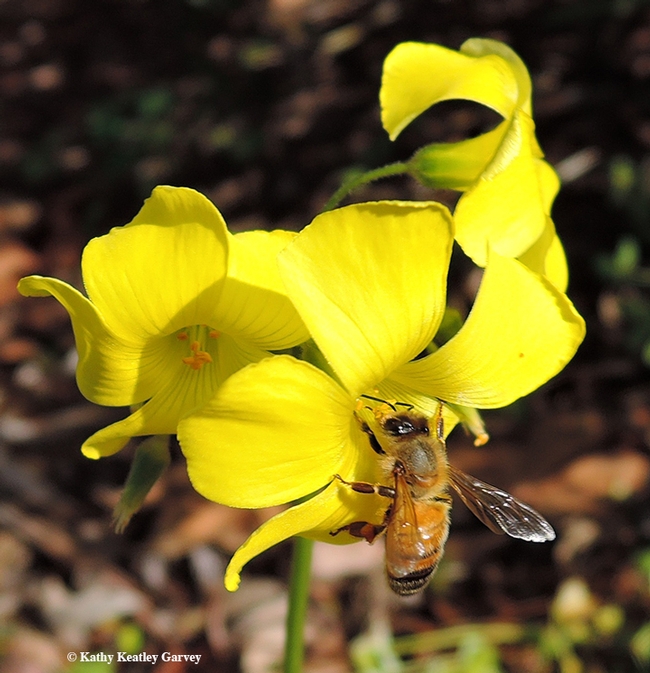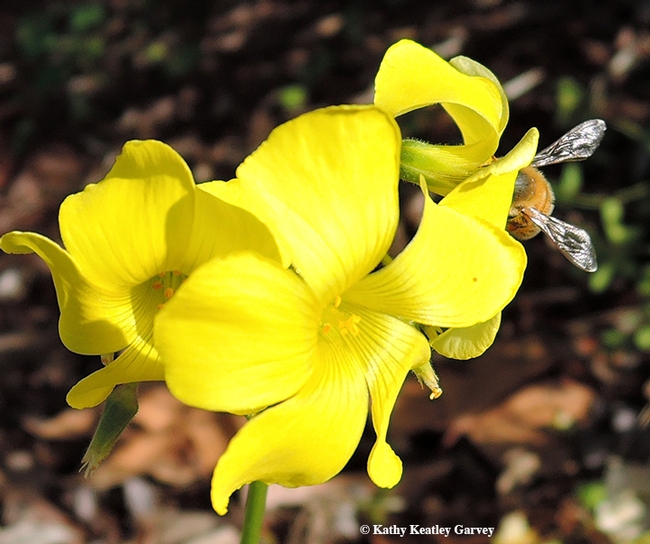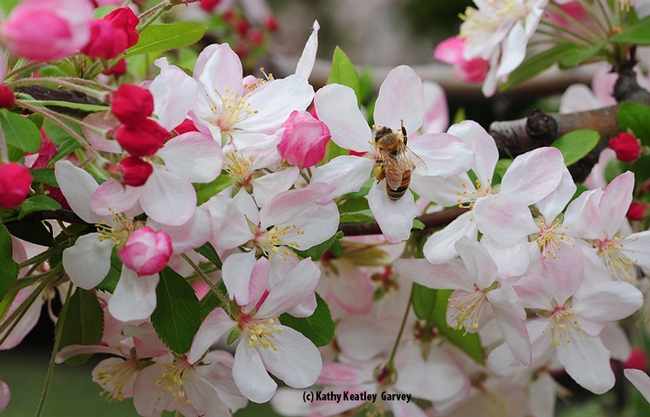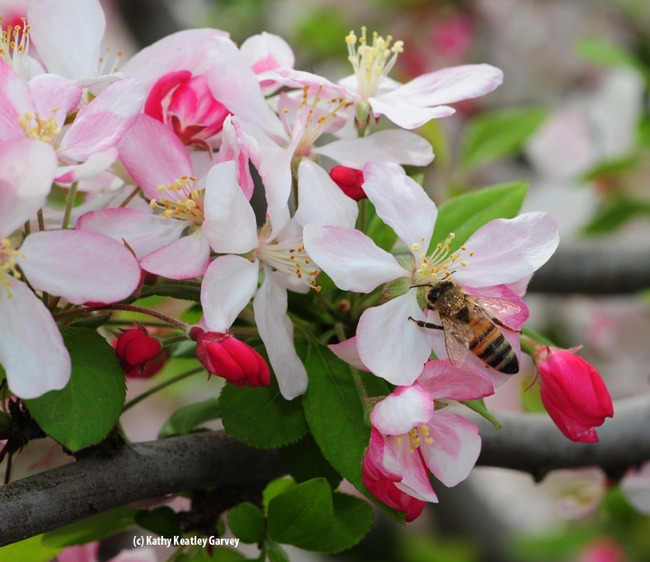Posts Tagged: Apple
How Cold Is It? Ask Siri and Check for Bees
Have you ever asked Siri "How cold is it?" Siri, a computer program known as Apple's "intelligent personal assistant" or "knowledge navigator," is...

A honey bee foraging on oxalis at noon on Wednesday, Jan. 25 in Vacaville, Calif. Temperature: 53 degrees. (Photo by Kathy Keatley Garvey)

Pollen-packing honey bee on oxalis. (Photo by Kathy Keatley Garvey)

There she is! Silvery wings and all. (Photo by Kathy Keatley Garvey)
How to Tell It's Almost Spring
You can tell it's almost spring when you hear bees buzzing on the flowering crab apples. Spring officially starts Friday, March 20, but don't tell...

Honey bee foraging on flowering crab apple. (Photo by Kathy Keatley Garvey)

Check out the pollen load of this honey bee on flowering crab apple. (Photo by Kathy Keatley Garvey)

This bee is making a beeline for the next crab apple blossom. (Photo by Kathy Keatley Garvey)

This bee is coated with pollen from the crab apple blossoms. These photos were taken in the Sonoma Cornerstone gardens. (Photo by Kathy Keatley Garvey)
Of Medflies and Light Brown Apple Moths
Congratulations to James R. Carey, distinguished professor of entomology at the UC Davis Department of Entomology and Nematology for his public...

UC Davis Distinguished Professor James R. Carey with some of the maps he used in his research. (Photo by Kathy Keatley Garvey)
Is that a light brown apple moth?
Light brown apple moth is currently under a California Department of Food and Agriculture quarantine that regulates the interstate shipment of plants to keep the moth from spreading to new areas. It has been quarantined in various counties throughout coastal California ranging from Mendocino to San Diego.
An exotic and invasive pest from Australia, light brown apple moth has a host range of more than 2,000 plants. It is a pest to a wide range of ornamental and agricultural crops, including caneberries, strawberries, citrus, stone fruit, apples, and grapes. The caterpillars eat leaves and buds, leading to weak or disfigured plants. They also can feed directly on fruit, causing the fruit to be unmarketable.
Correct field identification of the light brown apple moth is the first step in containing the spread of this moth. Unfortunately several other leafroller caterpillars, including the orange tortrix, omnivorous leafroller, avocado leafroller, and apple pandemic moth, look similar to light brown apple moth caterpillars. This makes photo identification tools that can go into the field with workers, like the Field Identification Guide for Light Brown Apple Moth in California Nurseries, a useful resource for nursery workers.
The field guide was created by Steven Tjosvold, Neal Murray, University of California Cooperative Extension; Marc Epstein, Obediah Sage, California Department of Food and Agriculture; and Todd Gilligan, Colorado State University with the UC Statewide Integrated Pest Management Program (UC IPM).
For more information on light brown apple moth and other leafrollers found in nurseries, see the UC Pest Management Guidelines for Floriculture and Nurseries.
Apple Blossom Time
It's apple blossom time. Whether you wait for it, or the bees wait for it, it's here. Albert Von Tilzer and Neville Fleeson wrote the popular song,...

Honey bee gathering the sweet nectar. (Photo by Kathy Keatley Garvey)

Honey bee about to take flight for another apple blossom. (Photo by Kathy Keatley Garvey)

A honey bee tucked in her blanket of blossoms. (Photo by Kathy Keatley Garvey)


